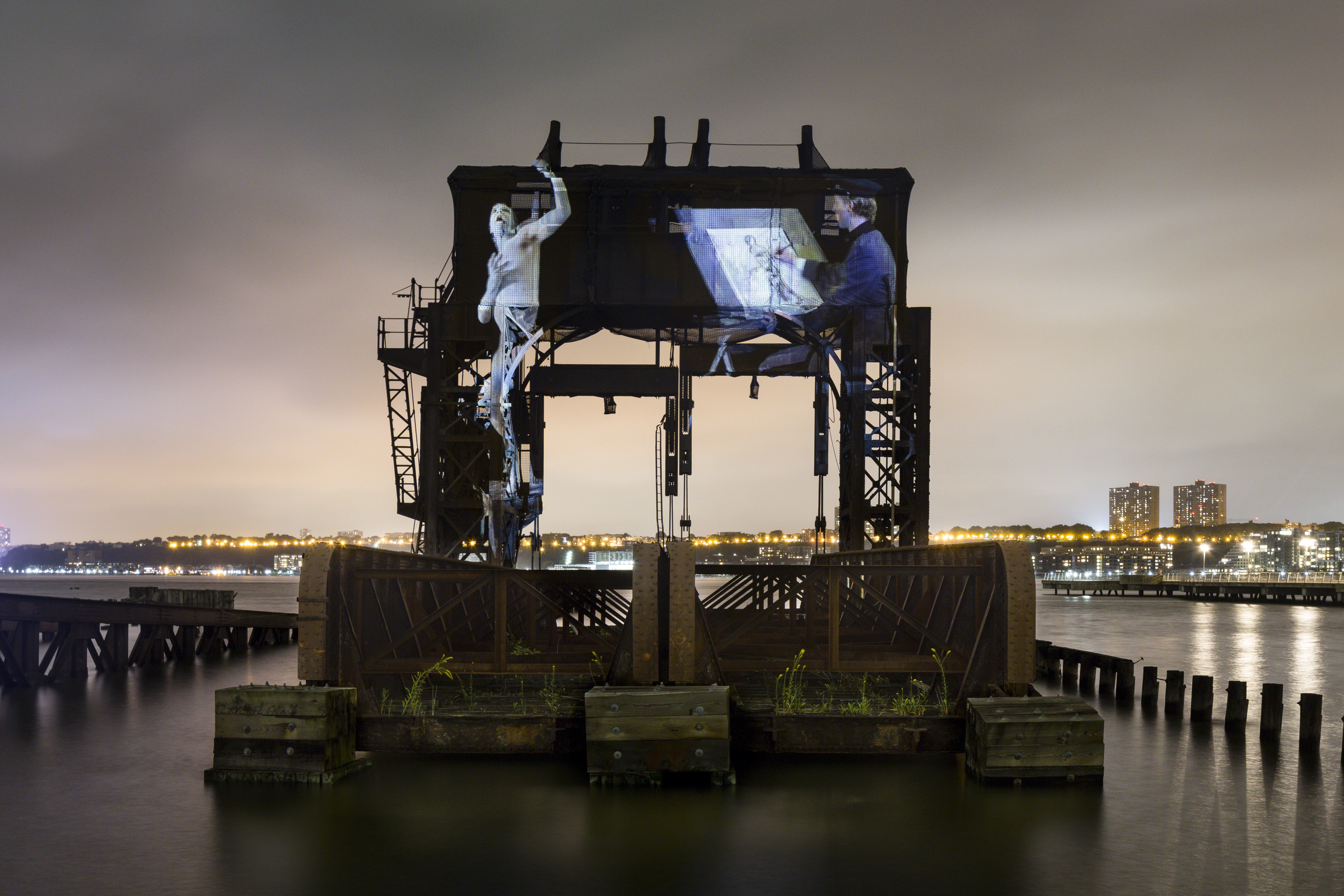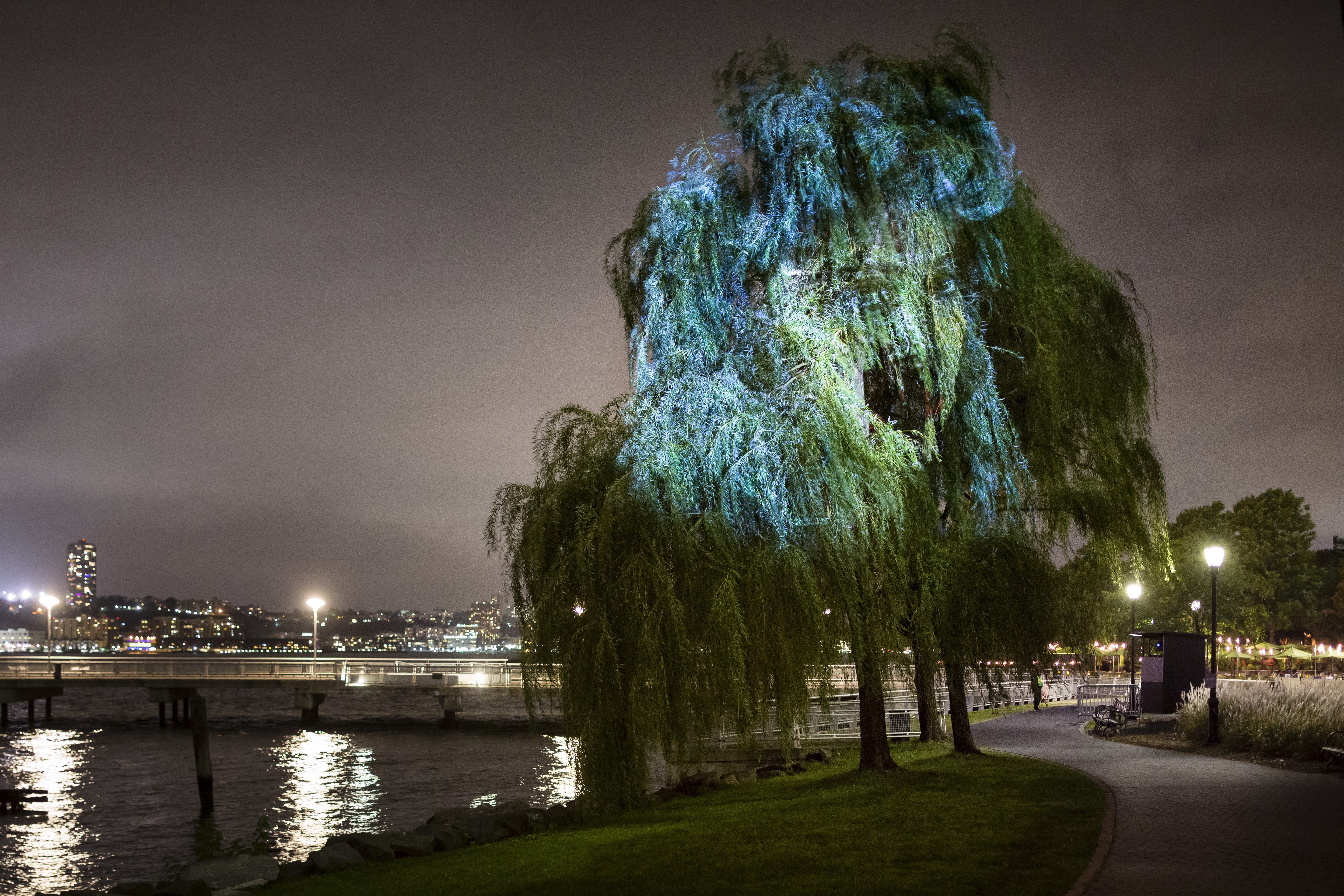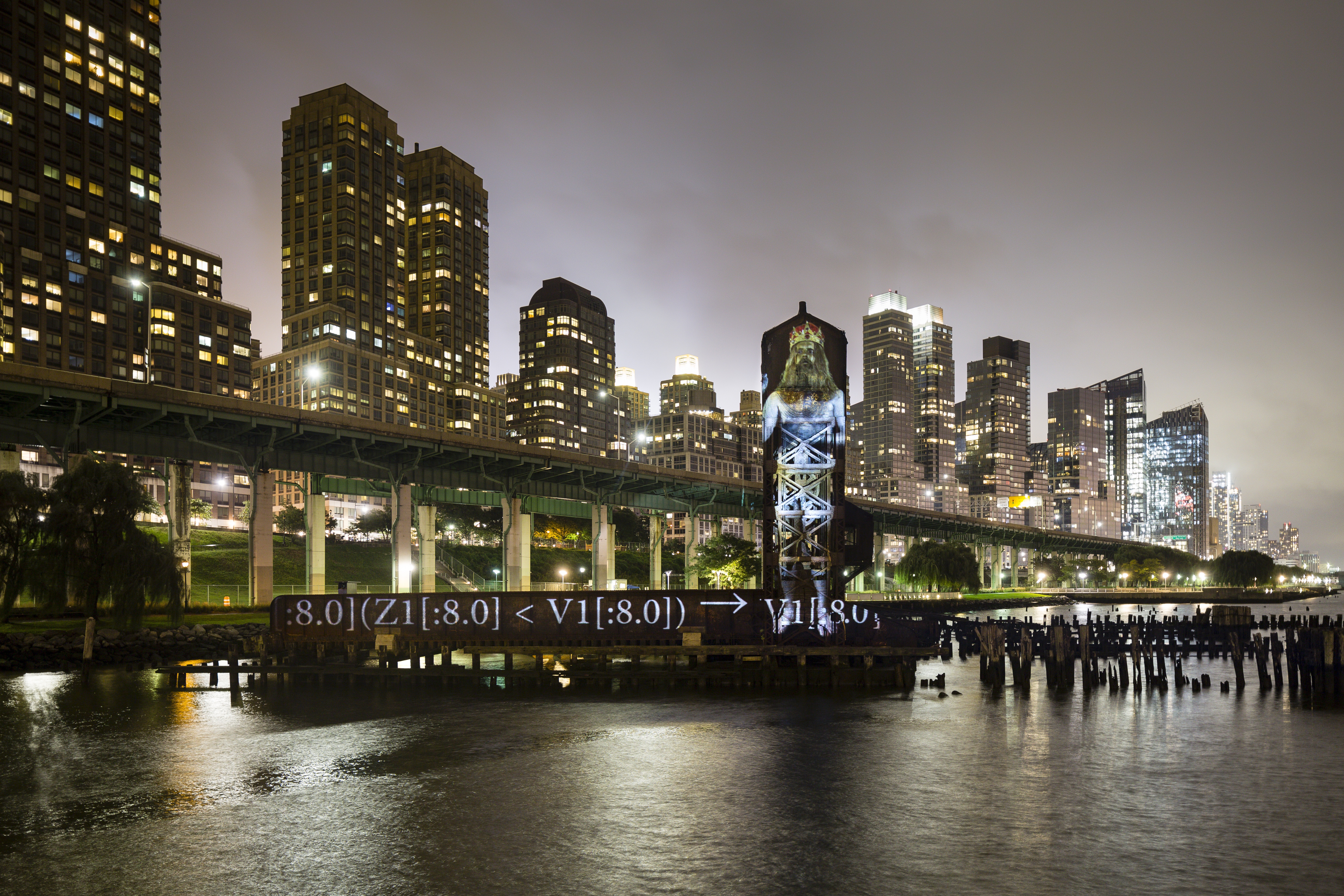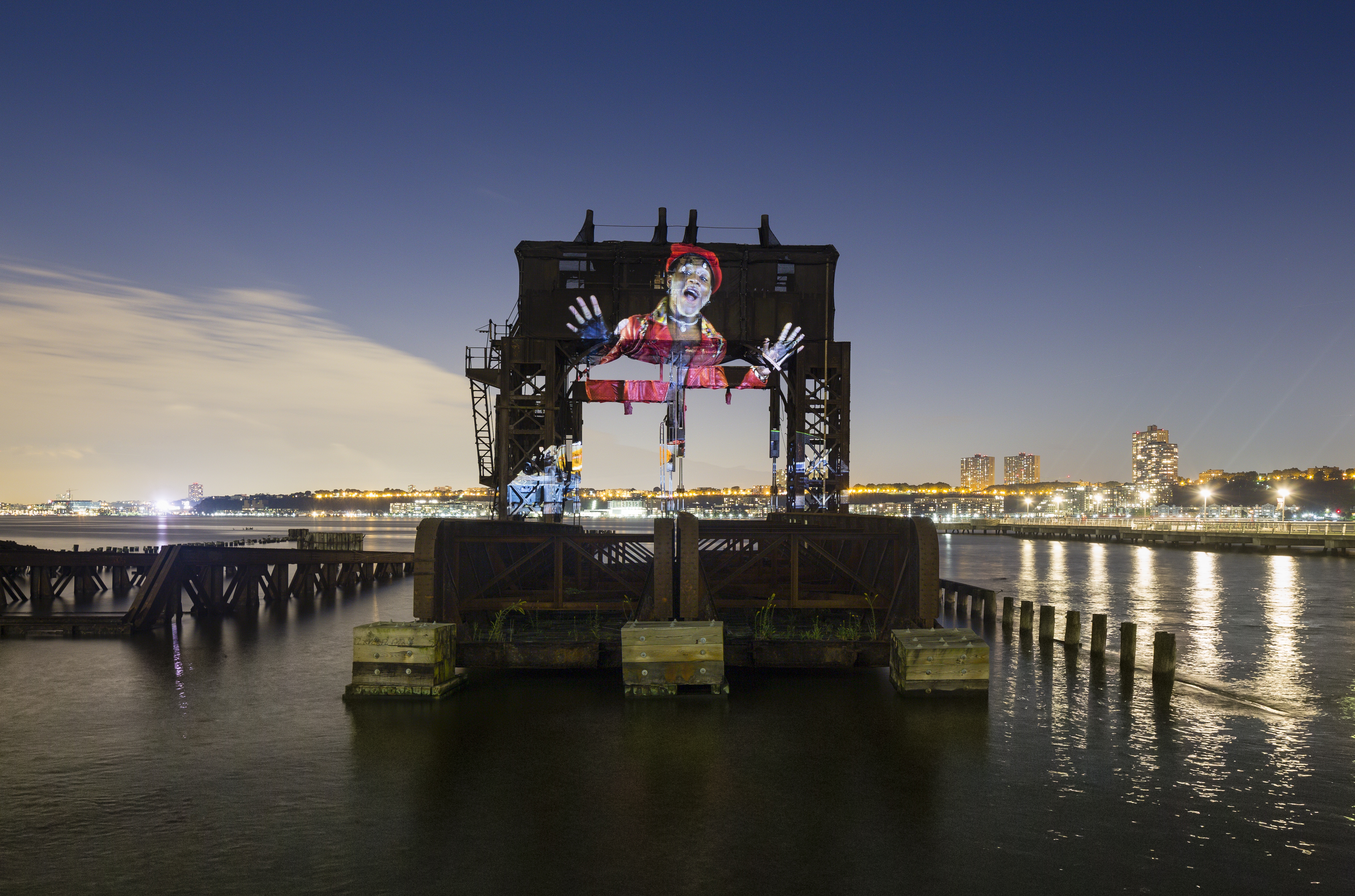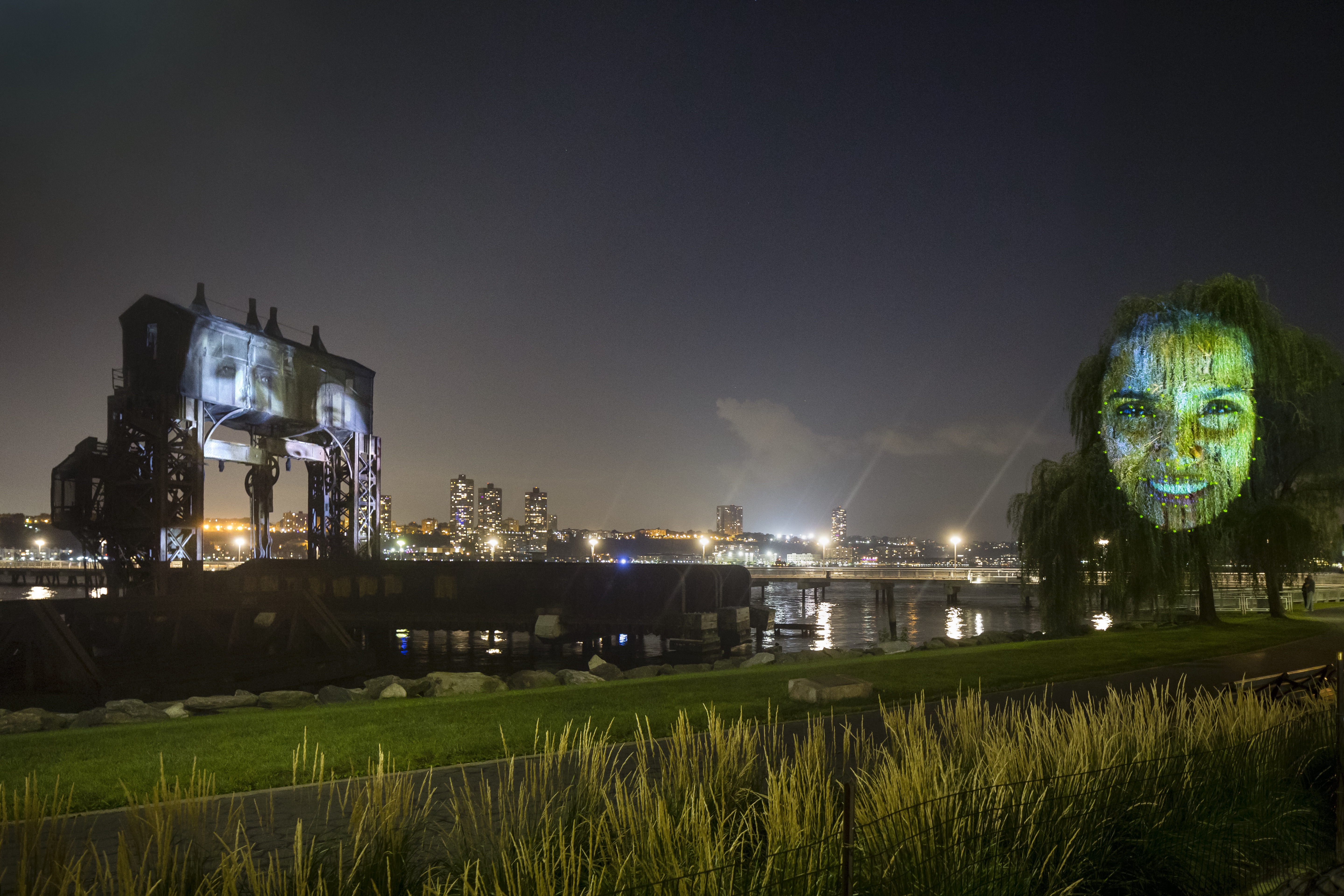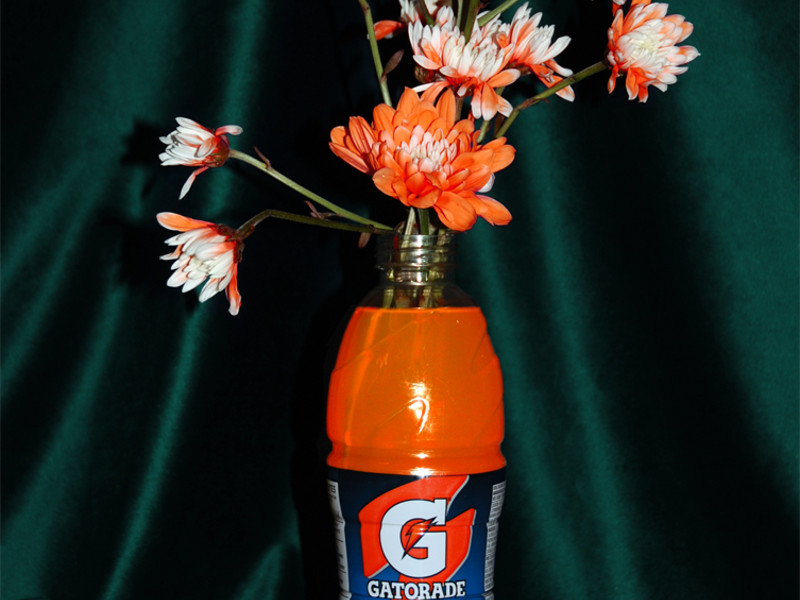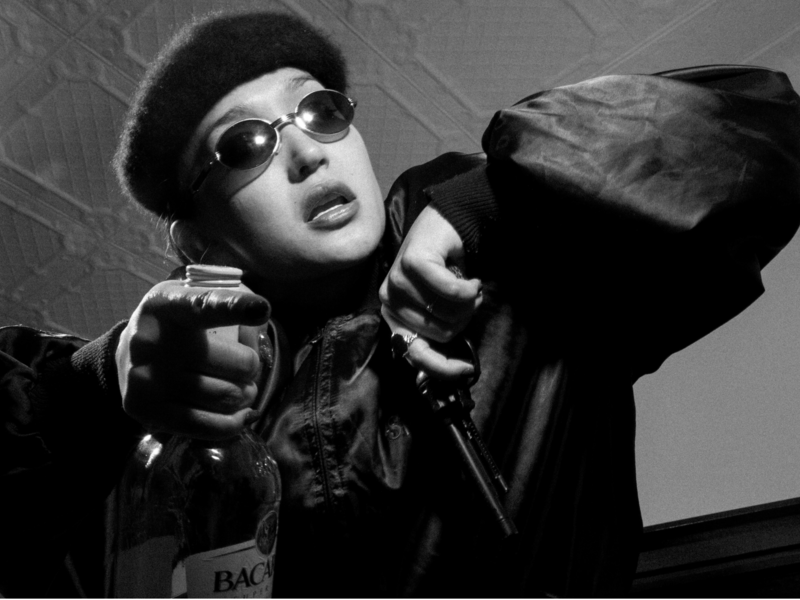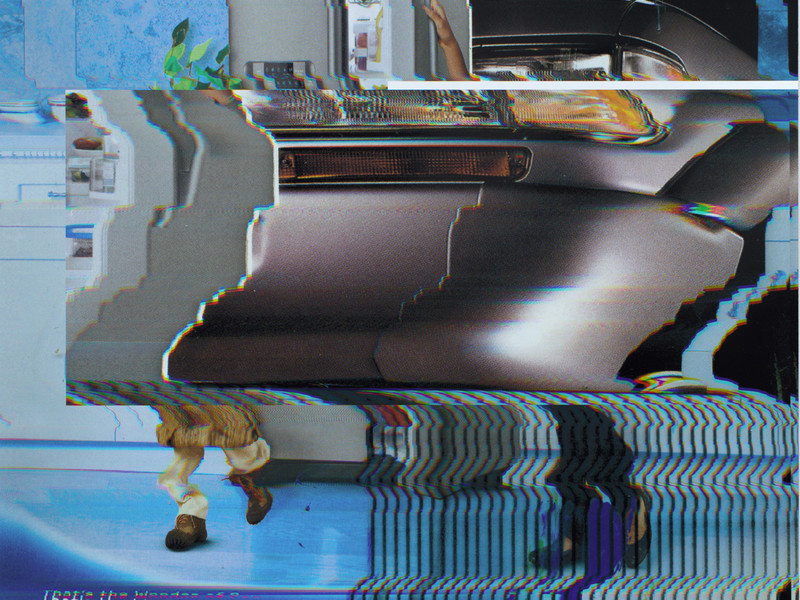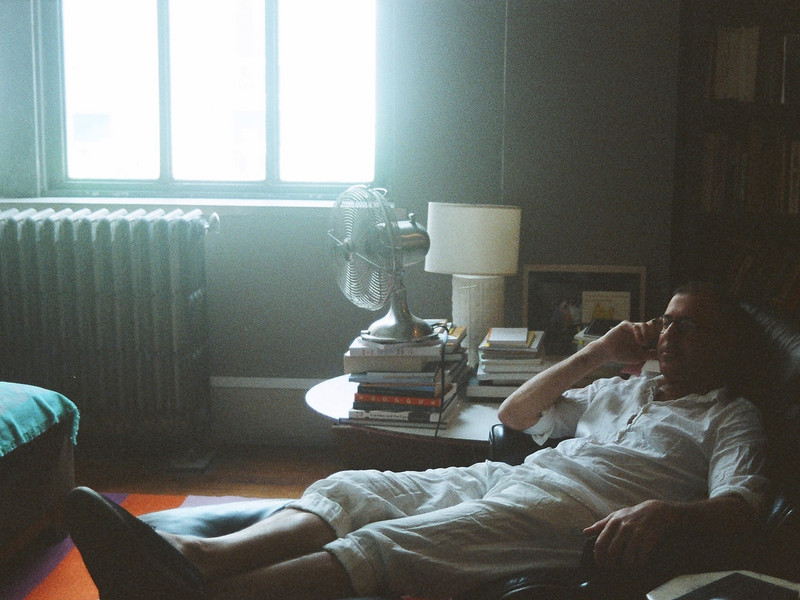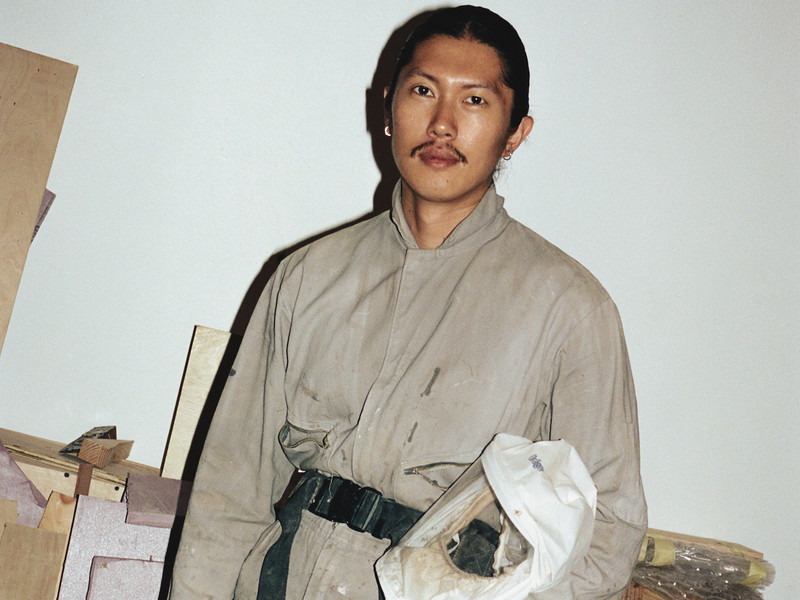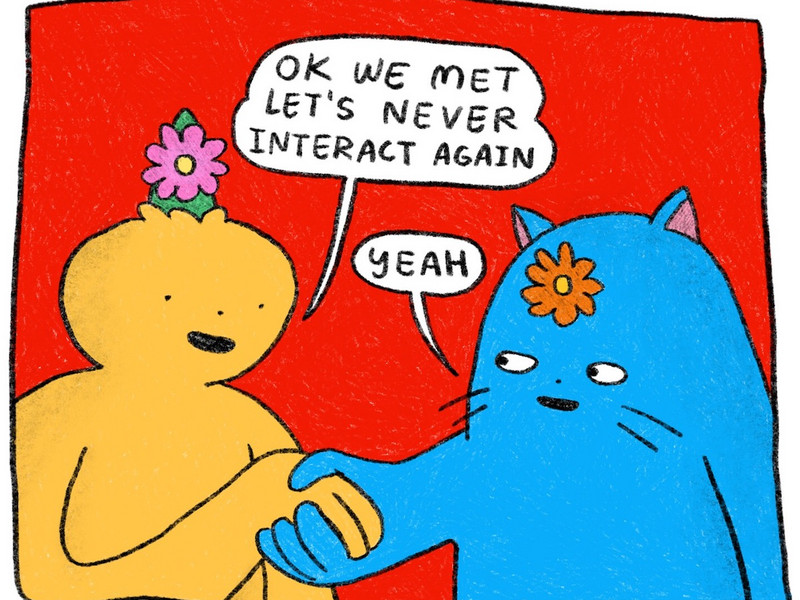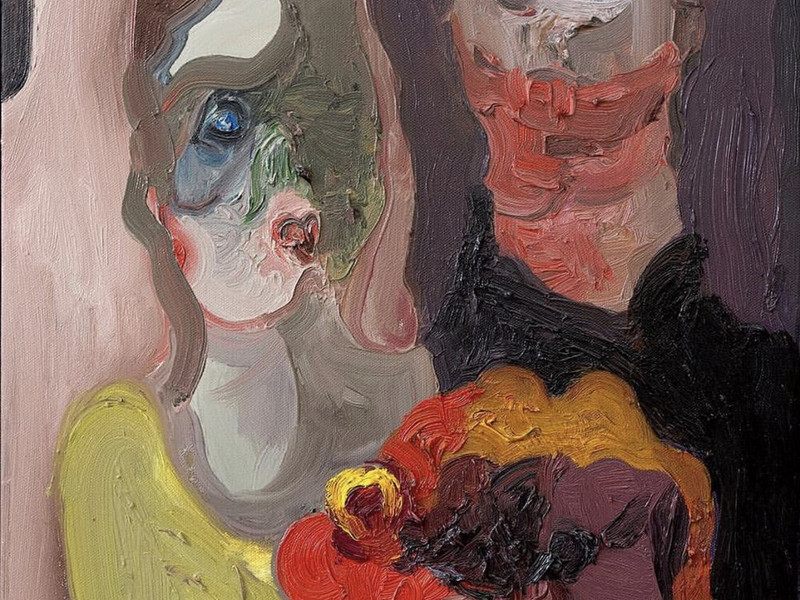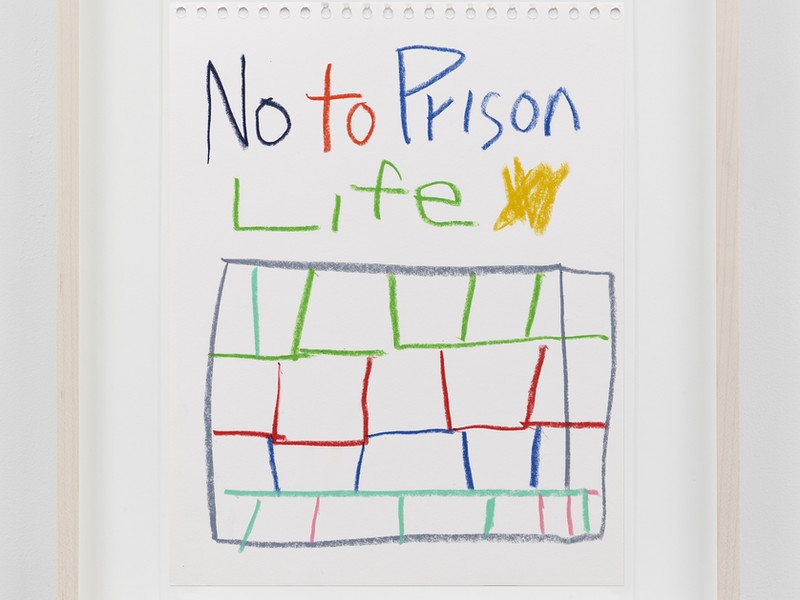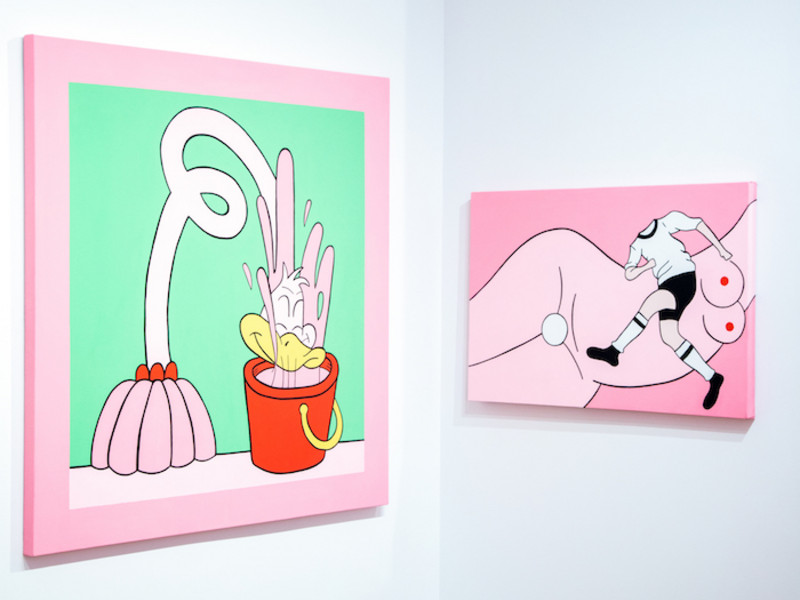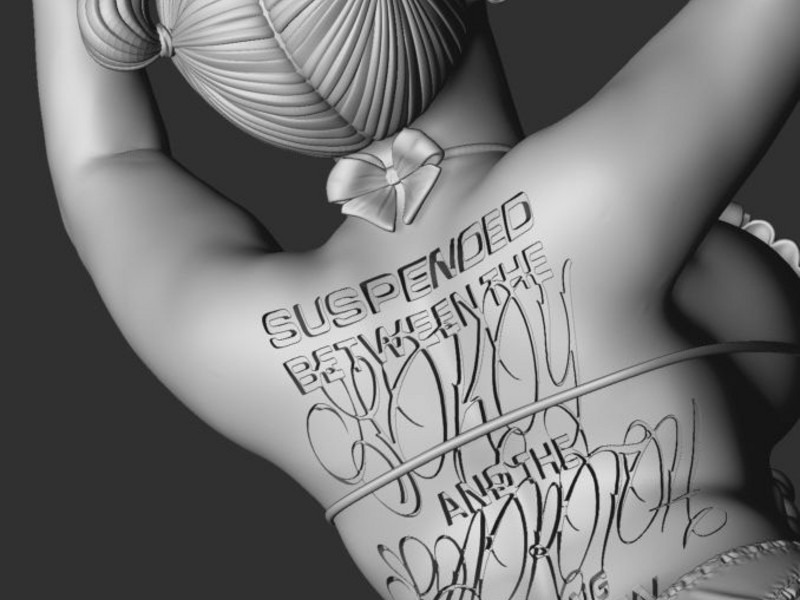Tear of the Cloud
The content of the ongoing streaming art films is connected to the history of the Hudson River and its surrounding environs—and not just the part that touches New York City, but all of New York state. Oursler’s lexicon of references is so vast it requires a site map for viewers to discern the connections (a companion piece in and of itself). From the upstate Oneida commune to the invention of LSD and the psychedelic movement it spawned (also upstate), to Grand Master Flash of the Bronx and the confrontation between white settlers and the Native Americans, as well as facial recognition software and other spooky progressive technology, Oursler draws on a vast and variegated history to compose an incredibly engrossing and original outdoor artwork, the likes of which has never really been seen before.
I was reminded of a drive-in theatre—my only real reference from life to compare an outdoor film experience. This was something else entirely. The projections become almost living things, three-dimensional in a way a projection almost never is—as you walk by the weeping willow, the image becomes elongated and distorted among the branches, a moving orb of light.
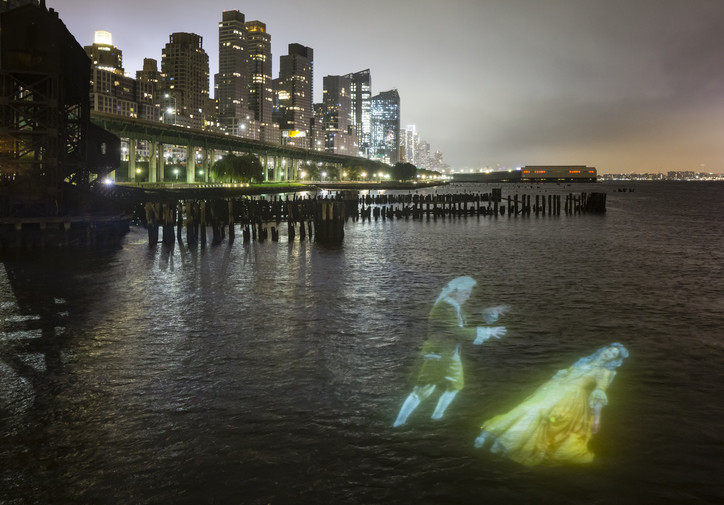
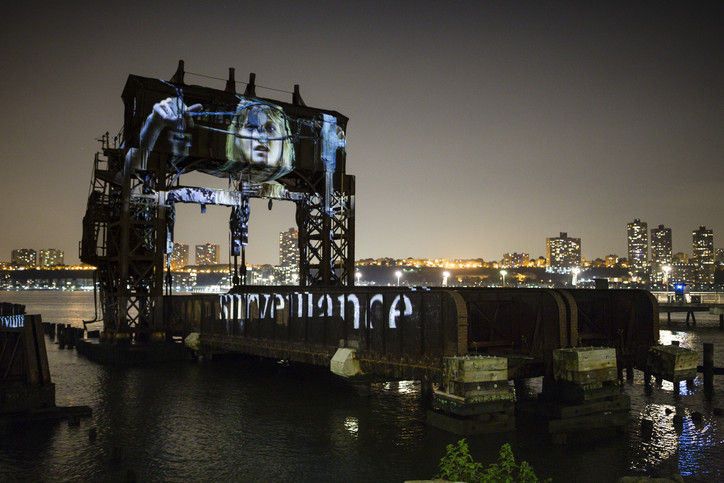
To a giddy group of journalists, the artist spoke about stumbling upon different places in the city and how you inevitably connect them to your personal experience and memories—something he’s clearly working with, since I’ll never walk by this pier again and not think of his piece. He also mentioned the Hudson’s original Native American name, Mahicantuck, from the Lenape tribe, which means ‘river that flows in two directions,’ and became a propelling metaphor for the piece, which is clear from its multifaceted and clashing-yet-working mentality.
Oursler knew his history—he spoke of the problematic Hudson River School, which was, debatably, the first American art movement, and a rather staid one at that, but one that led to the first land-preservation. It’s this unexpected trajectory that was his artistic muse, as well as ideas about the transmitting of information—Deep Blue, the first computer ever to beat a world-champion in chess, was invented by IBM here in New York, and finds its way into the piece as well, as a harbinger of a new era of data transmission.
He is summoning ghosts from history as well as the cloud—our lives are lived on the net, after all. Looking at his piece is like looking at a scrambled Google search through Hudson river associations flickering this way and that, a parsed collective memory that speaks through its absence as much as its presence, in the same way a projection is not really there, cannot be touched, but its image is nonetheless powerful and magical. Tony Oursler has created a magnificent work of art, but once it is removed, only the gantry, the pier and the river will remain—a majestic note on the power of the ether as well as of visceral, lived experience, since it is a piece that can only really be experienced in person.
'Tear of the Cloud' will be on view through October 31 at the Riverside Park Pier I (near 68th and 70th streets), in New York City.
All images courtesy of the Public Art Fund.
